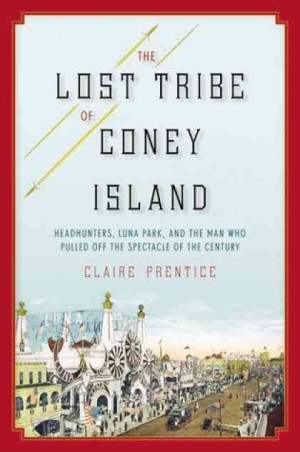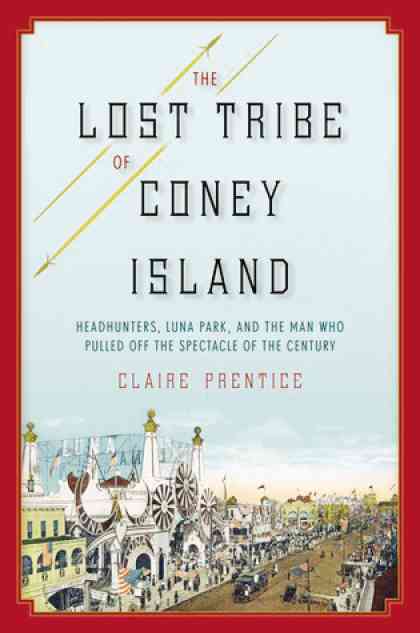 MANILA, Philippines—The 1904 St. Louis World’s Fair in St. Louis, Missouri, infamously showcased over 1,100 Filipinos as a spectacle that highlighted the primitive nature of those included in the “Philippine Exhibit.” The “Igorrotes”—Igorots from Bontoc Province—were the most popular attractions because the Americans were shocked by their dog-eating, headhunting ways. This much is common knowledge.
MANILA, Philippines—The 1904 St. Louis World’s Fair in St. Louis, Missouri, infamously showcased over 1,100 Filipinos as a spectacle that highlighted the primitive nature of those included in the “Philippine Exhibit.” The “Igorrotes”—Igorots from Bontoc Province—were the most popular attractions because the Americans were shocked by their dog-eating, headhunting ways. This much is common knowledge.
What isn’t common knowledge is that the Igorrotes became even more sensational and sought-after once the World’s Fair was over. How the Igorrotes became both spectacle and victims was an untold story. Until now.
Prize-winning journalist Claire Prentice’s first book, “The Lost Tribe of Coney Island: Headhunters, Luna Park, and the Man Who Pulled off the Spectacle of the Century” (New Harvest, New York, 2014, 416 pages), tells this shocking story with drama and detail. After managing a group of Igorrotes for the fair, Dr. Truman K. Hunt, a physician who served as part of the American mission in Bontoc, brought 50 Igorrotes (the spelling used by the American media at the time and the term Prentice uses for the book) and one Negrito across the ocean in 1905 to tour the American amusement park circuit, most notably Coney Island in New York, where, as Prentice writes, “the extraordinary was commonplace and the humdrum of everyday life could be forgotten.”
Living sideshow
Hunt made a fortune using the Igorrotes as a living sideshow as millions of Americans came to see them. “A few months earlier, most Americans had had no idea what Igorrotes were,” Prentice says. “Since then, the word Igorrote had entered the American language as shorthand for a naive, savage human being.” All this was happening while the United States controversially was governing the Philippines after buying the territory from Spain: “The Igorrotes were like one of the distorting mirrors at the Coney funfair. How they were portrayed reflected the views of those looking at them more often than it gave a true picture of the Igorrotes themselves. And though the tribespeople never expressed a word about politics, they were constantly drawn into the debate about America’s place in the Philippines.”
The Igorrotes were immensely popular with crowds, known for being scrupulously honest. The problem was that the spendthrift Hunt, who fancied himself an impresario, proved to be a ruthless businessman, treating the Igorrotes as his own property, cheating them out of their promised money and then dragging the Igorrotes all over the country wherever a buck was to be made.
Changing completely from the father figure the Igorrotes knew when they signed up for what was supposed to be just one year, Hunt lied to the Igorrotes constantly and reneging on contracts whenever offered more money.
Worse, Hunt forced the Igorrotes to put on a mockery of their culture, forcing them to eat dogs on a regular basis when in truth they only ate dogs on very rare special occasions: “dog eaters… Was that all that this fascinating tribe’s customs had been reduced to, two sensational words?”
“Lost Tribe” follows the Igorrotes’ forced tour and the legal fireworks that occurred when the American government pursued Hunt for his crooked maltreatment of the tribespeople. It’s a vividly engaging story that proves both realistic and unpredictable. Prentice’s work has been compared to that of bestselling nonfiction author Erik Larson (2004’s “The Devil in the White City”), and, indeed, Prentice stuns with her ability to make the readers feel as if they’re right there in the middle of the action. But Prentice adds her own poetic touch with her muscular prose and the bottomless well of detail.
Aside from conniving, charismatic Hunt, the conflicted translator Julio and the irrepressible Negrito boy Friday are unforgettable.
“Lost Tribe” is eye-opening for any reader, but Filipinos will find themselves both shocked and engrossed by this true-to-life drama. From its unflinching portrayal of “human exhibits” to its portrait of the maddening greed of Hunt, “Lost Tribe” challenges the readers to decide what is primitive and what is civilized behavior. It’s a magnificent book about a terrible time.
Most of all, the brilliant “The Lost Tribe of Coney Island” stands as testament to the sad saga and noble fortitude of its displaced, titular tribe, something Claire Prentice affirms in her afterword: “I hope that this book, in telling the story of the Igorrotes who were taken to America in 1905, does something of honor their extraordinary lives.” It does.
Available in hardcover from National Book Store.









































